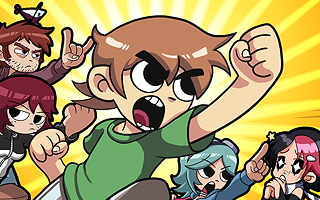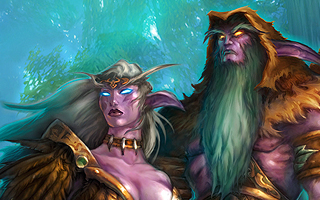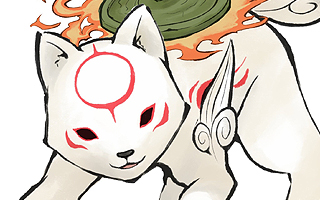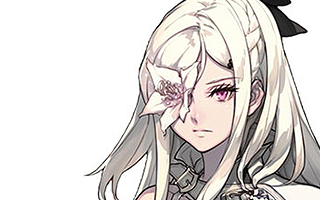Then and Wow!
Top 10 Best Video Game Character Makeovers of All Time!
It has been said that the only constant is change, and this is certainly true of the video game industry. Developers and publishers are constantly coming up with new hardware, new franchises, and new genres in their efforts to reach new gamers. Since the industry is in a constant state of change, it only makes sense that video game characters would also evolve over time. A makeover can help a character stay relevant or make them more appealing to certain demographics. A change in direction can also ruin a character altogether, but this list aims to recognize positive results. Change is seldom met with universal acceptance, but the transformations discussed on this list redefined the characters and worked as intended.
Examples: Woody Woodpecker (1944), Beast (1972), Betty Boop (1931)
10
Sophitia Alexandra
SoulCalibur Series

Sometimes, the easiest solutions are the best ones. In the case of Sophitia, improving her design was as simple as increasing her bust line. Other characters in the series underwent similar transformations, but Sophitia’s evolution was unexpected since her initial design was understated and restrained. By the time SoulCalibur IV was released, she had dropped her pointless plate of armor in favor of revealing fabric that accentuated her heaving breasts. She was still portrayed as a courageous and honorable fighter, however. If anything, she had even more emotional depth than she did before. Her body was just one of her positive attributes, and there was no reason to write off her personality just because her boobs happened to be the size of her head. She was the same brave warrior that she was in the past, but some critics were too busy slut-shaming her to notice.
9
Cortana
Halo Series

Cortana acts as Master Chief’s sidekick and is one of the most important figures in the Human-Covenant war. As an AI construct with no physical body, she communicates by projecting herself in a holographic form. Her appearance was said to resemble the doctor whose brain she was created from, but her facial structure changed over time and she became more curvaceous. Her initial design had an impish quality that underplayed her feminine charms. She was originally based on the Egyptian queen Nefertiti, but by the time Halo 4 was released, she looked more like porn star Dylan Ryder (who starred in such classics as Soaking Wet Mess.) Some sex-negative puritans expressed their disapproval, but her evolution was actually quite logical. Attractive people are generally more successful in life and they hold more influence over others. As Cortana’s role changed and her personality became manipulative, it only makes sense that she would adopt a more alluring avatar in order to get what she wants. Some will ask why Cortana would choose to represent herself as a naked chick, but the real question is why wouldn’t she? Cortana reached maximum hotness in Halo 4. The less said about her frumpy Halo 5 makeover, the better.
8
Alucard
Castlevania Series

The conflicted son of Dracula made his first appearance in Castlevania III. After helping Trevor Belmont defeat the notorious Count, Alucard faded away into obscurity and wouldn’t be seen again until Symphony of the Night was released in 1997. This outing adopted a gothic style that borrowed heavily from Bishonen-style art, and Alucard abandoned his Eddie Munster look in favor of a more androgynous appearance. The transformation was drastic, but it was not illogical in any sense and other characters in the franchise evolved in a similar fashion. Although only seven years had passed between the release of Castlevania III and Symphony of the Night, nearly 200 years had passed in the timeline. Evidently, the styles from 1599 were no longer fashionable in 1792. Changing your hair style isn’t really too much of a stretch for a guy who can transform into a bat.
7
Nina Williams
Tekken Series

All of the fighters in the original Tekken were unsightly, but that’s to be expected when you only have a few hundred polygons to work with. Many of the characters from the series could have been mentioned here, but Nina is the best fit for this list for a couple of reasons. Her evolution from a hideous creature to a total babe was more notable than the evolution of other characters. It’s one thing for an aging martial arts master or a robot to be ugly as fuck, but Nina was a femme fatale who (ostensibly) was supposed to be pretty. Tekken 2 marked a significant visual upgrade for the franchise and Nina became a little more attractive with each new entry in the series. Namco wasn’t pandering by making Nina easier on the eyes. Rather, they were rendering her the way they had intended all along. Nina’s appearance is directly tied to what the technology would allow for. This is certainly true of other characters as well, but the gradual evolution of Nina over the years helps define the Tekken series and an entire generation as a whole.
6
Samus Aran
Metroid Series

The first Metroid game ended with the revelation that Samus Aran was a girl. For the better part of the next two decades, she retained the image of a strong-willed and independent heroine in the vein of Ellen Ripley from the Alien movies. She had sex appeal, but it had more to do with her accomplishments than it did with her physical appearance. This began to change in Metroid: Zero Mission when she briefly donned a form-fitting “Zero Suit” in lieu of her typical power armor. Her sex appeal was played up even further in Super Smash Bros. Brawl. She was the same legendary bounty hunter that she had always been, but she was now a blonde bombshell with killer curves and a fat ass. Remarkably, she was even prettier and more shapely in the fourth Smash Bros. installment. If this trend keeps up, Nintendo might have to swap out her Zero Suit for her birthday suit!
5
Koyori
Samurai Aces Series

Samurai Aces (known as Sengoku Ace in Japan) is a shoot ’em up with a Feudal Japan setting and a science-fantasy storyline. Koyori is a teenage shrine maiden who flies a bi-plane and has a tomboy personality. While attractive in her own right, her appearance was underplayed in the first game. By the time the sequel was announced, however, Koyori may as well have changed her name to Ms. Fanservice. It’s not as though she instantly became a better character just because she started wearing less clothes, but there’s no denying that her stripperific makeover made her the most popular character in the franchise by a considerable margin. Although she’s not the main character, she is undoubtedly the face of the franchise. She’s prominently featured in scandalous fan art, and the game’s publisher even officially sanctioned a number of lewd PVC figures of her in order to promote the series. There was nothing inherently wrong with Koyori’s original homely design, but the fan response to her updated look proves yet again that sex sells.
4
Conker
Conker Series

In his initial appearances in Diddy Kong Racing and Conker’s Pocket Tales, Conker came across as kind-hearted and polite. With the release of Bad Fur Day, Conker swore like a sailor, drank like a fish, and engaged in lewd conduct. His initial design painted him as a colorful woodland creature who would seem right at home in a Disney cartoon. After receiving an M-rated makeover for Conker’s Bad Fur Day, Conker was still depicted as a colorful animal mascot. A lot of the humor in the game was based around the concept of a kid-friendly character partaking in unsavory activities. If judged entirely on his appearance, Conker’s evolution is the least dramatic of any entry on this list. If you take personality into account, however, no other gaming character has ever undergone a more radical transformation.
3
Link
Zelda Series

Although early Zelda games like A Link to the Past featured bright and whimsical visuals, the series took a decidedly more “mature” turn when Ocarina of Time was released on the Nintendo 64. A gritty technical demonstration shown at Space World 2000 seemed to suggest that the Zelda series would be continuing in this direction on the GameCube. However, when The Wind Waker was revealed the following year, gamers were taken aback by the newly-adopted art style. This new Zelda game boasted colorful cel-shaded graphics and resembled an interactive cartoon. Some critics referred to the game as “Celda” and unfairly bashed the game on the assumption that Nintendo was trying to pander to a younger audience, but most fans were able to recognize the beauty in both art styles once the initial shock wore off. Nintendo has since used a similar art style in numerous Zelda games, and an HD remake of The Wind Waker for the Wii U was met with open arms.
2
Medusa
Kid Icarus Series

The characters in Kid Icarus: Uprising had more personality than they did in previous installments and were more-or-less defined by their witty banter. Their appearances were updated as well, but most of their designs were in line with the spirit of the original games. Medusa’s evolution was drastic, however, and her Uprising design looked nothing like her previous incarnation. 25 years is a long time, and Medusa apparently used her absence to become more beautiful. Medusa had initially been depicted as a creature with green skin and one eye. She looked uglier in the artwork than she did in the actual game, but she was still a monster. In Kid Icarus: Uprising, Medusa was legitimately attractive. Her skin was pale and her hair was made out of snakes, but she was still a babe… at least until she revealed her monstrous form. Why do the pretty ones always detach their heads and fire eye lasers?
1
Team Fortress Crew
Team Fortress Series

The updated art style in Team Fortress 2 almost makes it easy to forget that Team Fortress Classic existed in the first place. Team Fortress began its life in 1996 as a Quake modification, but Valve commissioned a sequel that would stand on its own. Like its predecessor, Team Fortress 2 allowed players to choose from nine different character classes. Each of these classes had its own unique abilities, and it was paramount for players to properly fulfill these roles in order to succeed in the game. The character abilities and basic concepts were largely unchanged in the sequel, but the new art direction helped accentuate their personalities and helped highlight the humorous aspects of the game. The new character designs were exaggerated caricatures. You could tell a lot about the characters with a simple glance, and this sense of identity defined the entire game.





Do you agree with this list? Let us know what you think by leaving a comment below. Your opinion matters!